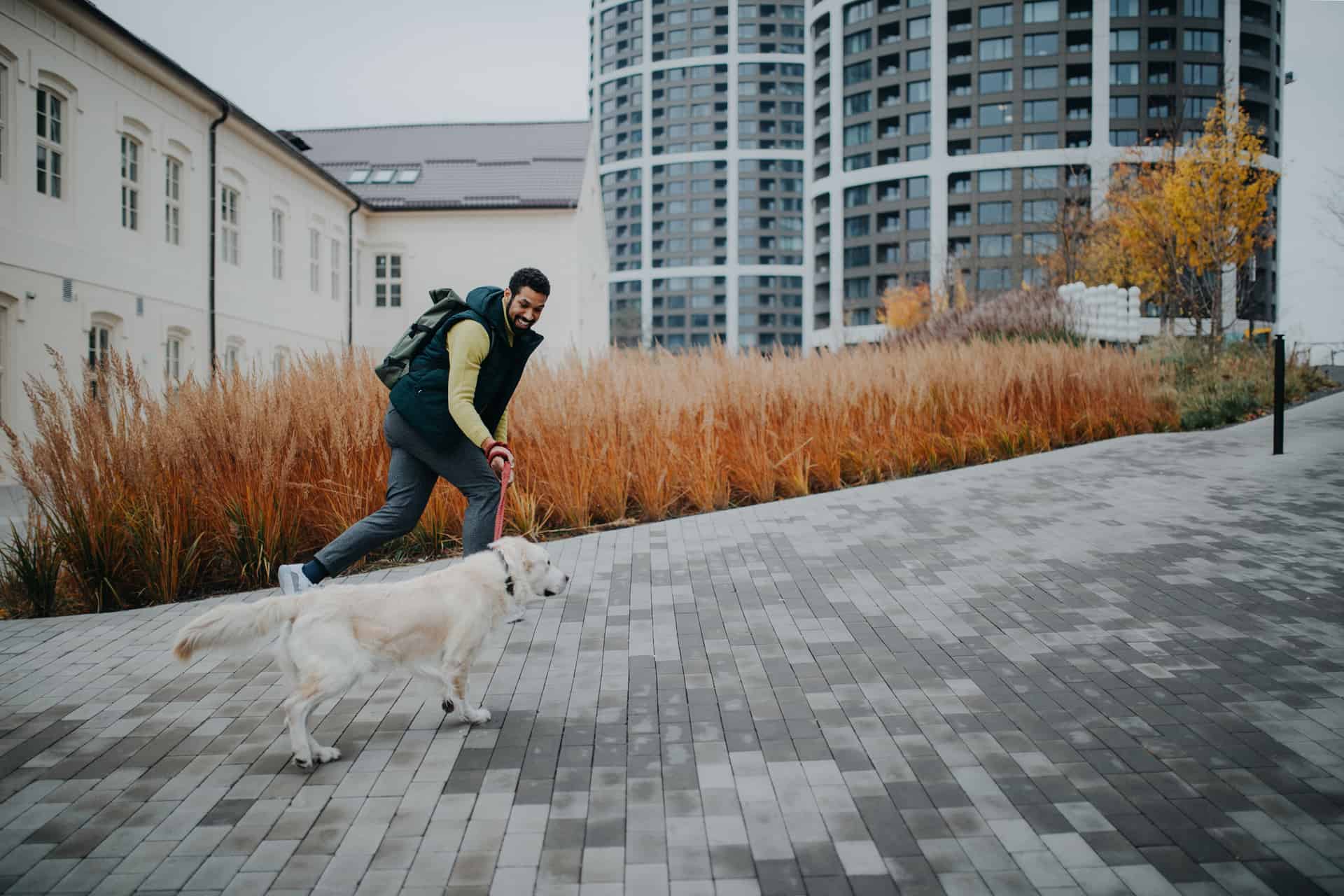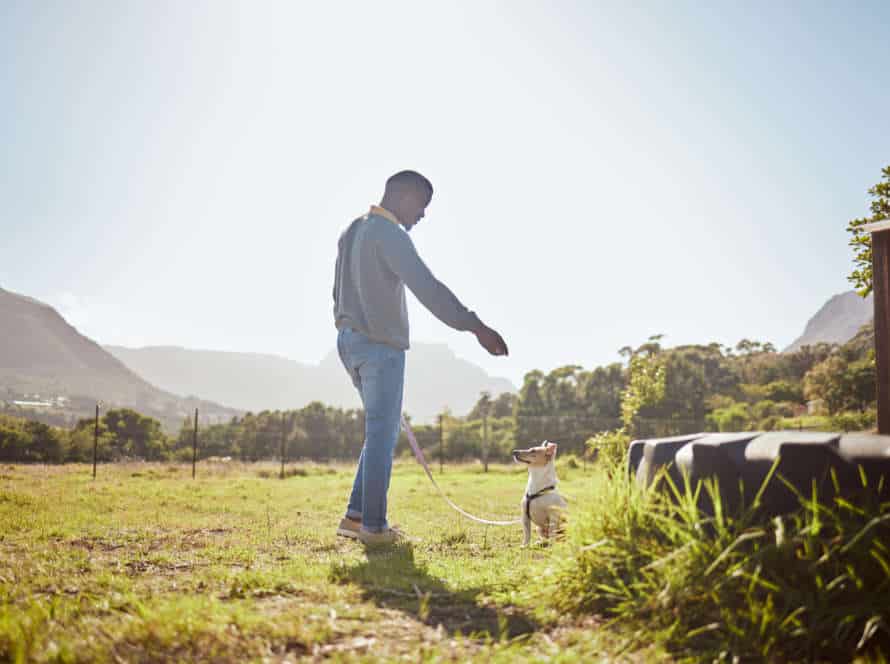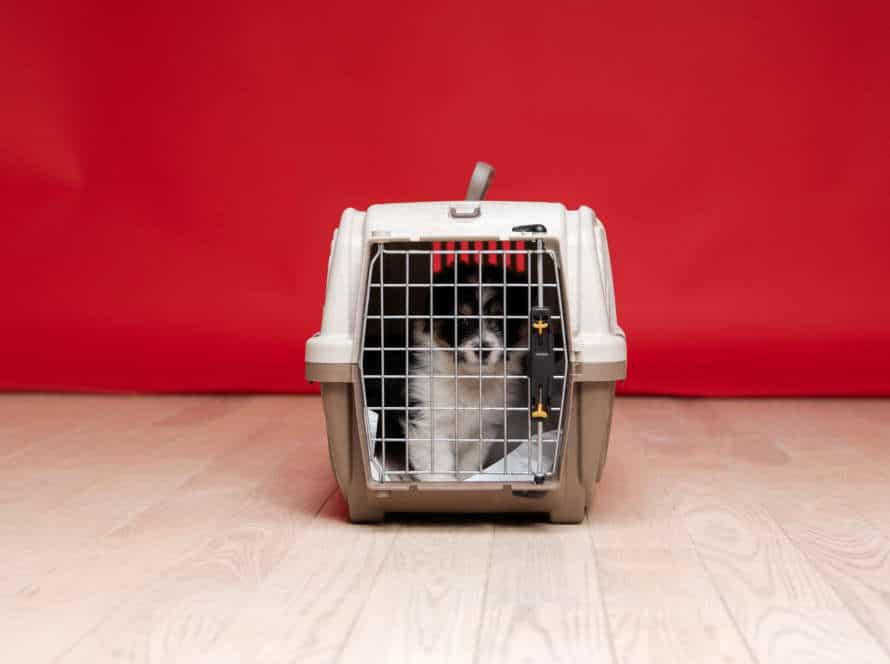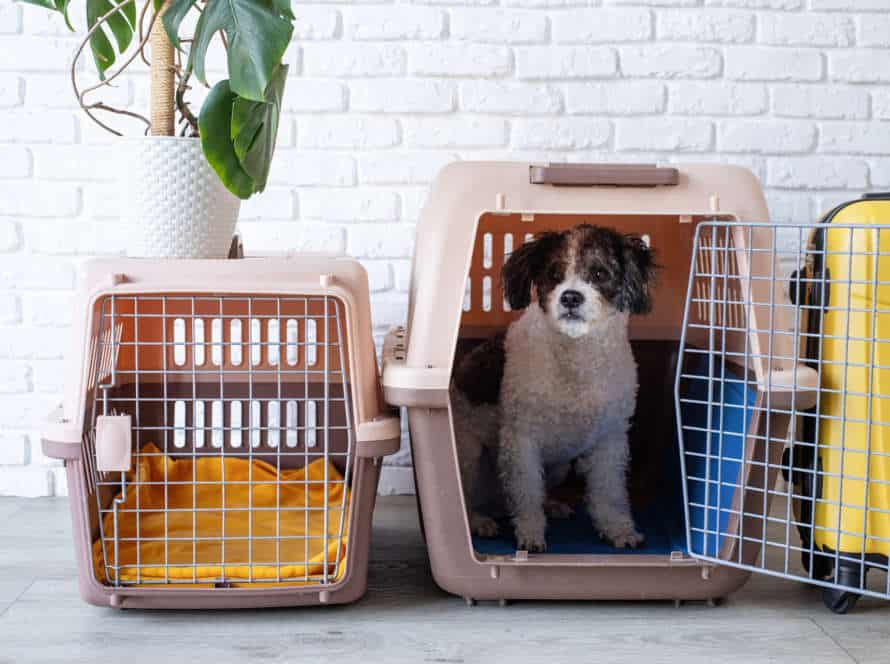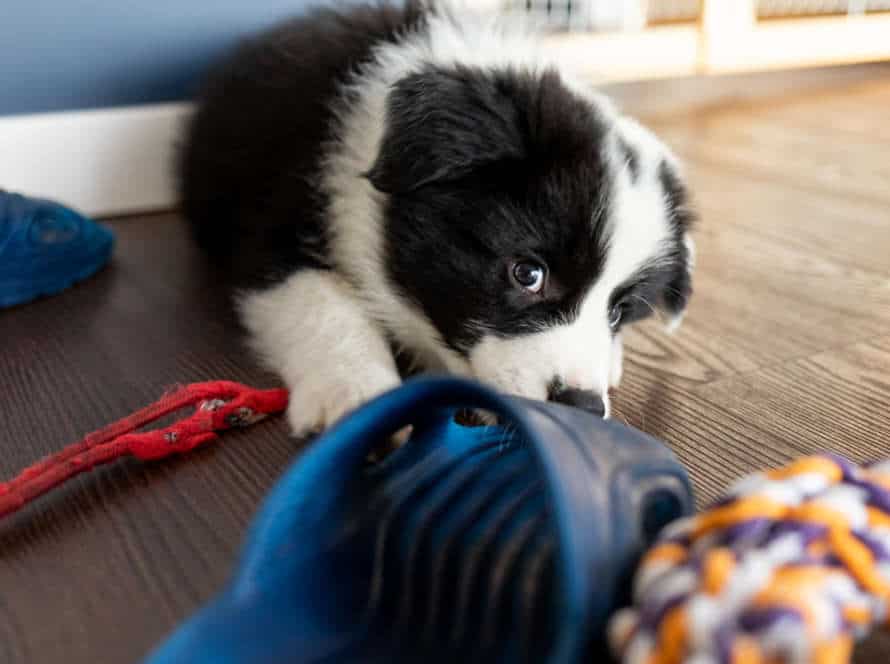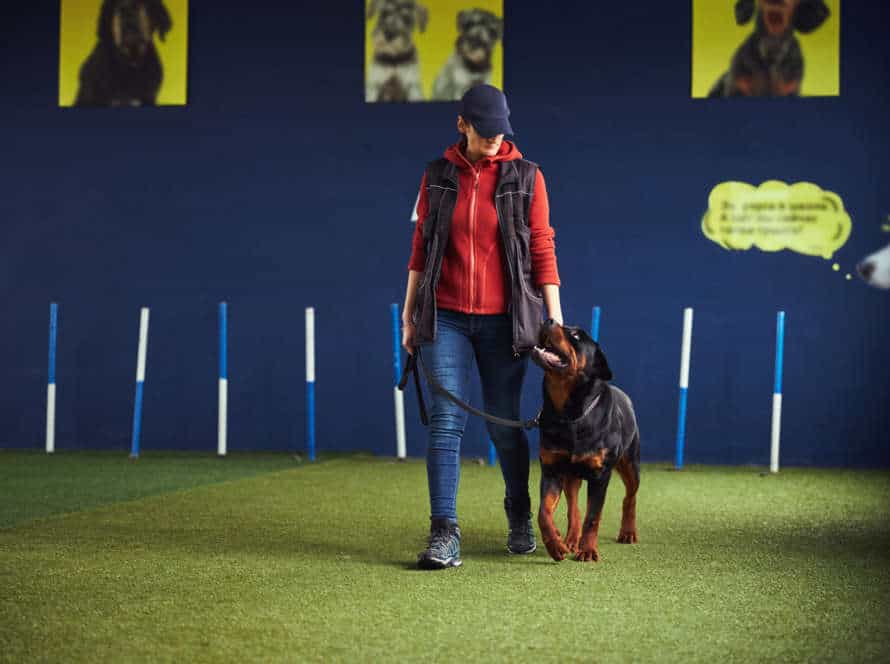The Importance of Loose Leash Walking
Loose leash walking is a great way to get in sync with your pup. It ensures a stress-free walk and strengthens the bond between you. In this article, we’ll talk about why it’s important, how it benefits you and your pup, and give you tips on teaching it.
Difference between loose leash walking and tight leash walking
Loose leash walking is the opposite of tight leash walking. A slack or slightly taut leash is used. This allows your dog to move comfortably and explore their environment. It also helps with positive reinforcement and prevents behavioral issues.
Tight leash walking involves a taut leash. You pull and jerk it to control your pet. This can cause physical strain and pain, and can create negative associations with walking and leash-walking.
In conclusion, loose leash walking is better for your dog’s health and behavior.
Positive impact on dog’s behavior and well-being
Train your dog to walk beside you with no tugging on the leash: it’s a great way to enhance your pup’s behaviour and wellbeing. You’ll strengthen your bond, communicate better and your pup will be stimulated physically and mentally. This type of walking can reduce stress and reduce the risk of injury. Investing time and effort in teaching your dog correct leash manners is an invest in their long-term health and happiness.
Pro tip: reward your dog with treats or verbal cues for loose leash walking and stay consistent with training.
Positive impact on owner-dog relationship
Loose leash walking is great for your pup and you! It makes communication better and helps you understand each other. Plus, it’s a great form of exercise for the both of you. It also has a calming effect, reducing stress and anxiety. And it’s a great bonding opportunity too – yay!
Remember to use positive reinforcement when training your pup. Treats and verbal praises work best as rewards – they make it more fun for the pup. So, grab the leash and take your pup for a walk!
Training Techniques for Loose Leash Walking
Train your pup to walk on a loose leash! This will create a stronger bond between you and your dog. Here are a few tips to help you.
- Reinforce the behavior. Give your dog treats when they walk beside you without tugging on the lead.
- Change directions. If your pup starts to pull, switch directions quickly and go the opposite way.
- Train in low-distraction environments. Start teaching your dog in a quiet place where there are no distractions.
- Make it fun. Make the training exciting by adding some fun activities and games.
With these techniques, your pup will soon be walking on a loose leash like a pro!
Choosing the right walking equipment
Choosing the right walking gear is super important for effective loose leash training techniques. These techniques can help you and your pup’s health and wellbeing a lot. Here are some tips to remember when deciding:
- Collars: Traditional collars are good for well-trained doggos. But they don’t offer much control and can cause neck strain or injury.
- Harnesses: There are different types of harnesses. Each one has its own features, like front-facing attachments, back-facing attachments, and no-pull features. These harnesses are great for controlling your pup’s chest and shoulders. They’re also comfy for long walks.
- Leashes: Retractable leashes aren’t good for loose leash training. Opt for a standard leash instead. It’ll give better control over your pup’s movements.
Investing in the right walking gear will help your pup with their behaviour, health, and happiness. Pro Tip: Talk to a dog training pro to help you pick the best walking gear for your pup’s needs.
Teaching the ‘heel’ and ‘leave it’ commands
Teach your pup the “heel” and “leave it” commands. It’ll help you with loose leash walking and make it a pleasant experience for both you and your furry friend.
“Heel” trains your dog to walk calmly beside you, rather than pulling and running ahead. Here’s how:
- Start slow, in a low-distraction environment.
- Use a leash, collar or harness for closeness.
- Reward your pup when they walk without pulling.
- Gradually increase difficulty level – more distractions, longer walks.
The “leave it” command helps when your dog needs to avoid something which might harm them. Here’s how:
- Hold a treat in a closed hand, show it to your pup, and say “leave it”.
- Wait until your pup loses interest in the treat, then give a different treat or praise.
- Repeat, gradually increasing time before reward.
These commands help your pup enjoy the walks with you, without pulling or getting distracted. Also, it’s a great bonding experience!
Reward-based training and positive reinforcement
Reward-based training and positive reinforcement are useful methods for loose leash walking. They help both you and your pup!
Here’s how it works: As soon as your dog walks on a loose leash, reward them with a treat, praise, or toy. This forms a good connection in your pup’s mind with loose leash walking. If they pull on the leash, stop right away. This eliminates the reward of forward motion and teaches your dog that pulling equals no progress. Entice your dog to come back to your side by using a treat or toy as a lure. Praise and reward your pup when they obey. Consistency is essential for success with this technique. Practice regularly and reward your pup every time they walk on a loose leash.
Loose leash walking is beneficial for both you and your pup. Walks become more enjoyable and there’s less risk of injury or discomfort from pulling on the leash. With positive reinforcement training, you and your pup can have a stronger bond and a better walking relationship.
Troubleshooting Loose Leash Walking
Achieving success with loose leash walking isn’t easy. You and your pup might have a few difficulties. These could include your dog pulling on the leash, going in different directions, or getting agitated. In this section, we’ll discuss troubleshooting methods. These will help make loose leash walking a pleasant experience for you and your pup!
Addressing common challenges, such as pulling or distractions
Loose leash walking is a great way to go for walks with your pup without tugging or distractions! But, many pup owners struggle to train their fluffy pals to stay on a loose leash. Here are some tips to make it easier:
- Pulling: If your pup is pulling on the leash, stop walking and wait until the leash becomes slack before you start again. Or, try a no-pull harness or a head halter.
- Distractions: If your pup gets distracted when walking and pulls towards something, distract them with a treat or a toy. Praise and reward your pup when they focus on you and walk on a loose leash.
- Inconsistencies: Consistency is important for loose leash walking. Make sure everyone who walks your pup uses the same methods and commands. Stick to a regular walking routine and always reward your pup when they walk on a loose leash.
With patience and practice, you and your pup can have successful, enjoyable walks.
Pro Tip: Use positive reinforcement and rewards to get your pup to walk on a loose leash. Make it a positive experience for your furry bestie!
Using corrective training tools correctly and safely
Corrective training tools can be useful for loose leash walking. But, if used wrong, it can cause harm to your pup and slow down your training. Here’s what you should know:
- Choose the right tool – Prong collars and choke chains are for experienced handlers. Go with a flat collar and standard leash if you’re not sure.
- Utilize it correctly – Read and follow instructions for the tool. Improper use can lead to choking or discomfort.
- Introduce gradually – Make your pup comfy with the tool by giving treats and positive reinforcement.
- Combine with positivity – Praise and reward your pup for good behavior when using corrective tools, not just rely on them.
Remember: Talk to a professional dog trainer before using corrective training tools. That way, you can make sure you’re using them the right and safe way for your pup.
Seeking professional help if needed
Loose leash walking is a must-learn skill for all dog owners! It keeps everyone – owner and pup – safe and happy. But, if it’s proving tricky, seek help from a dog trainer or behaviorist.
Trainers can customize a plan to suit your pup, and show you how to use positive reinforcement. It takes time and patience to master, but with the help of an expert, you’ll be on track quicker and enjoy a better bond with your pup.
Integrating Loose Leash Walking into Your Routine
Investing in your pup’s health and happiness? Loose leash walking could be the answer! It’s great for giving Fido mental and physical activity, plus it’s a bonding experience for you and your pup. Here are some tips on making leash walking part of your regular routine:
Incorporating loose leash walking into your daily routine
Introduce loose leash walking into your everyday life! It’s great for you and your pet! It teaches your pup to walk next to you and pay attention, making walks safer and more fun.
Here’s how to get started:
- Begin in a calm environment like your garden or a park with few distractions.
- Reward your dog with treats or praises when they walk beside you.
- Keep the lead loose – it should form a ‘J’ shape not be pulled tight.
- Practice daily for short periods, then gradually increase your distance and time.
With patience and regularity, loose leash walking will soon be a part of your life, helping you to bond with your dog.
Maintaining consistent expectations and reinforcement
Successful leash-walking requires consistent expectations and reinforcement. Here’s how to start:
- Create a clear command such as “heel” or “walk“.
- Reward your pup with treats or praise when they walk calmly on a loose leash.
- Enforce consequences when they pull or go in another direction.
- Practice regularly with brief walks, then increase the distance.
Leash-walking helps improve behavior, reduces arm/shoulder strain, and strengthens bonds with furry friends.
Tracking progress and celebrating milestones
Tracking your progress and celebrating key moments are essential when incorporating loose leash walking into your day-to-day routine with your pup. Loose leash walking is a technique where your dog can walk alongside you, with a loose leash, without tugging, yanking, or lunging.
To track your progress, here are some tips:
- Make a log to monitor the progress of each walk – like the time and distance, your dog’s behavior, and your reflections.
- Use a pedometer or fitness tracker to calculate the distance walked.
- Take pics or vids of your pup’s performance to record progress and milestones.
Celebrating milestones can be as easy as praising your pooch or giving them their favorite reward. Don’t forget to pat yourself on the back and celebrate all the hard work in training your furry friend.
Pro tip – Loose leash walking is a behavior that takes patience and consistency. Celebrating milestones can keep you motivated and encourage you to keep going with loose leash walking.
Frequently Asked Questions
Q: What is loose leash walking?
A: Loose leash walking is when your dog is trained to walk by your side without pulling on the leash, while keeping the leash slack. This allows for a more enjoyable and relaxing walk for both you and your dog.
Q: What are the benefits of loose leash walking?
A: The benefits of loose leash walking for both you and your dog are numerous. It reduces your dog’s stress and anxiety, improves your dog’s health and behavior, and enhances the bond between you and your dog.
Q: How do I train my dog to walk on a loose leash?
A: Training your dog to walk on a loose leash requires consistency, patience, and positive reinforcement techniques. Focus on rewarding your dog for walking politely by your side and correcting inappropriate behavior with a calm and firm voice.
Q: Can any breed of dog learn to walk on a loose leash?
A: Yes, any breed of dog can learn to walk on a loose leash. However, some breeds may require more training and patience than others, depending on their energy level, prey drive, and strength.
Q: What tools can I use to aid in loose leash walking?
A: There are several tools you can use to aid in loose leash walking, such as front-clip harnesses, head halters, and non-restrictive collars. However, it’s important to remember that the most effective tool is consistent training and positive reinforcement.
Q: What should I do if my dog continues to pull on the leash during walks?
A: If your dog continues to pull on the leash, go back to training basics and reinforce proper walking behavior. It may also be helpful to consult a professional dog trainer for additional guidance and support.

